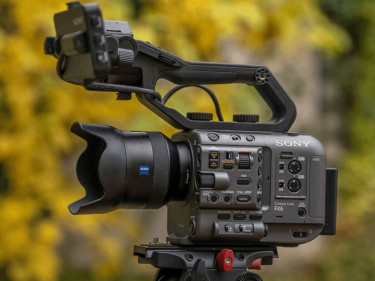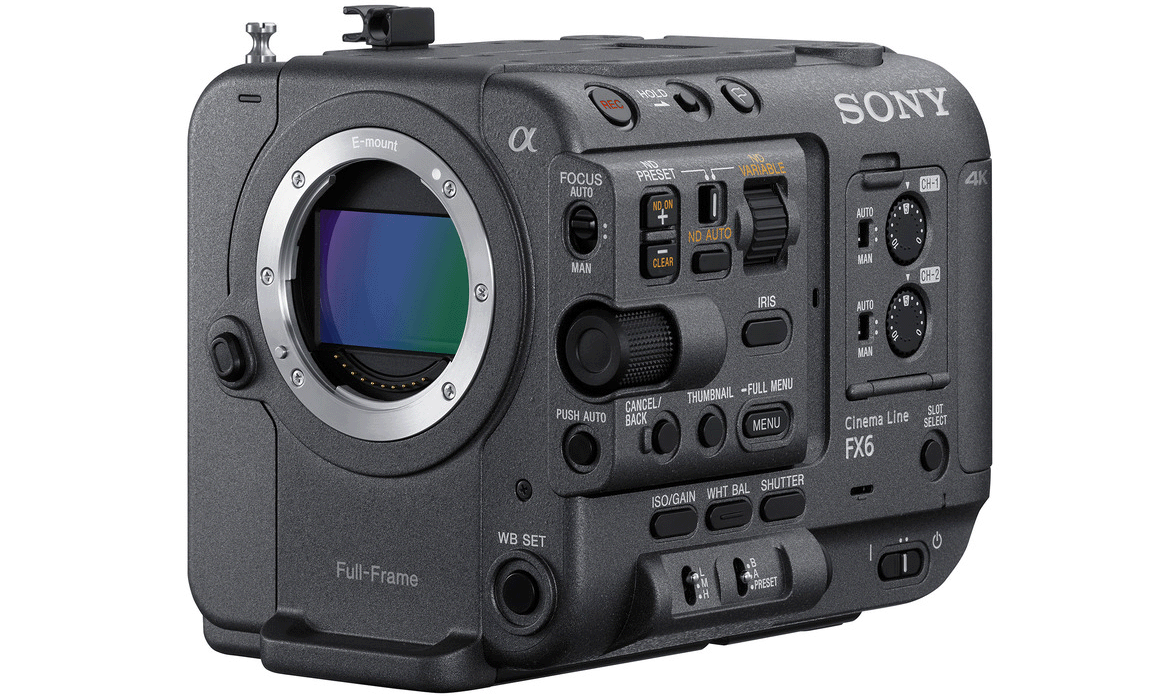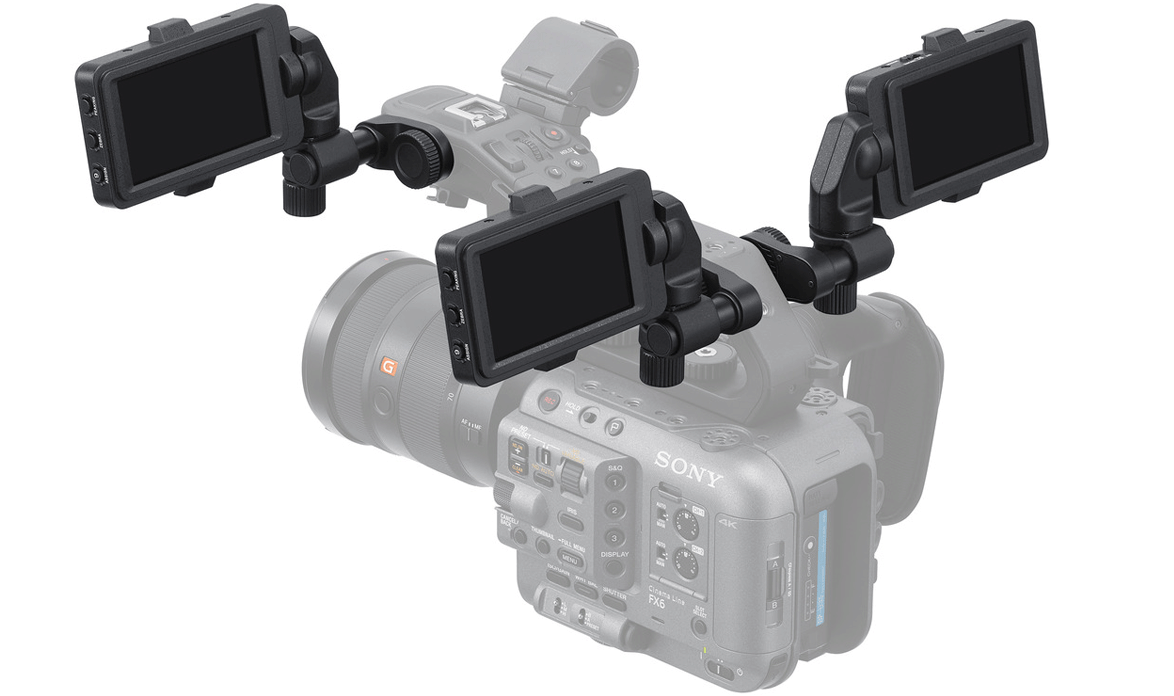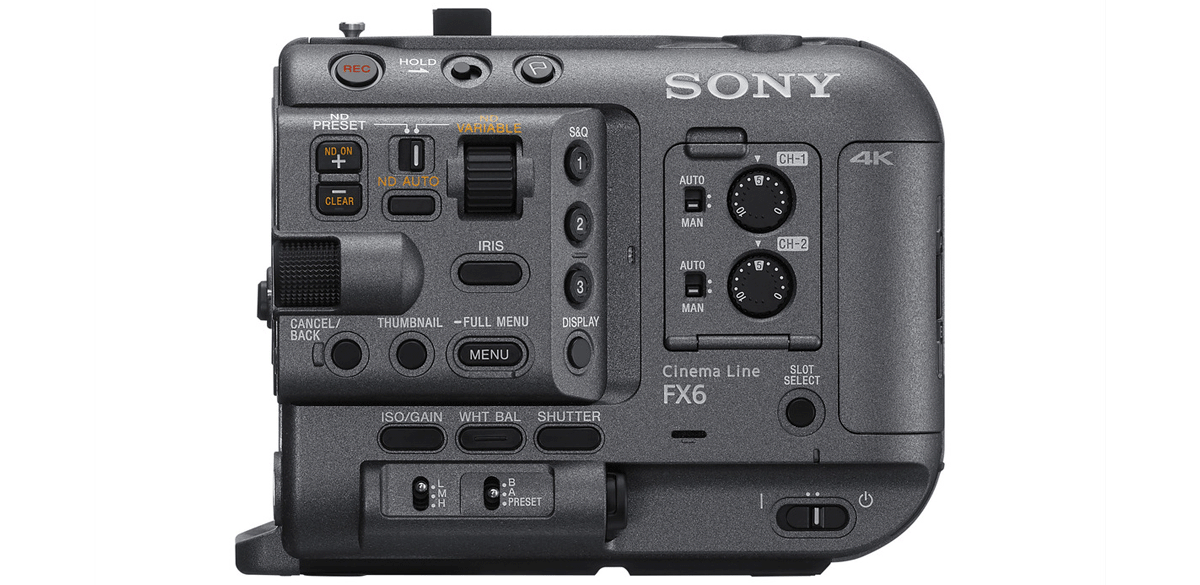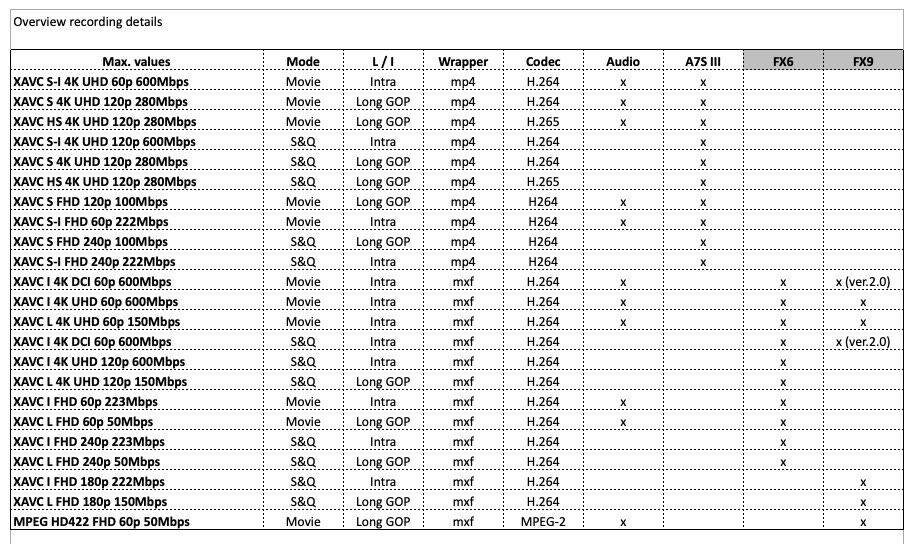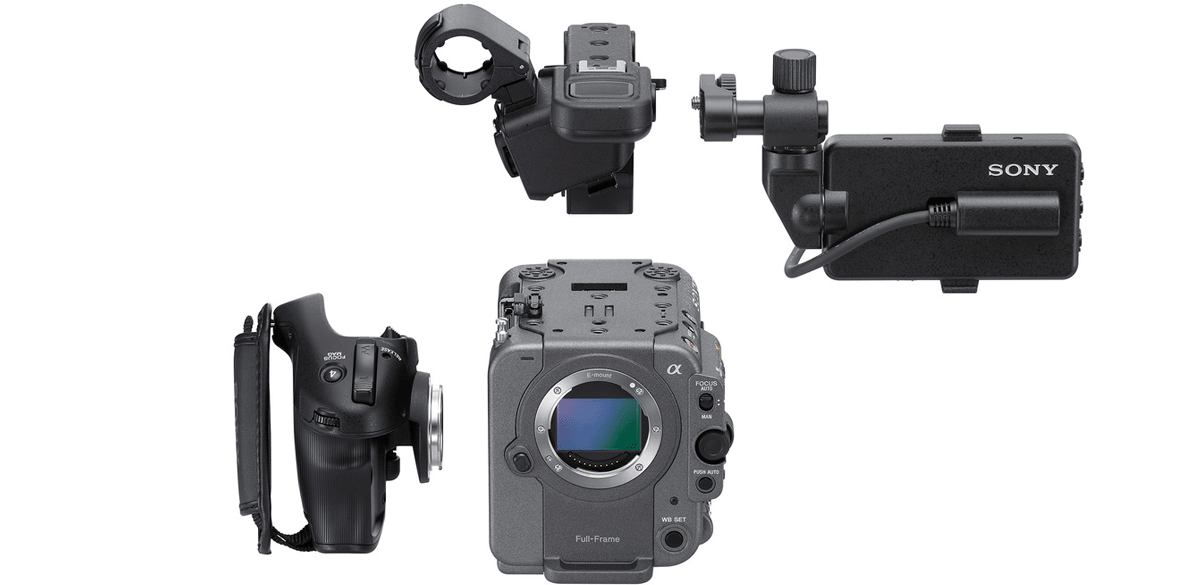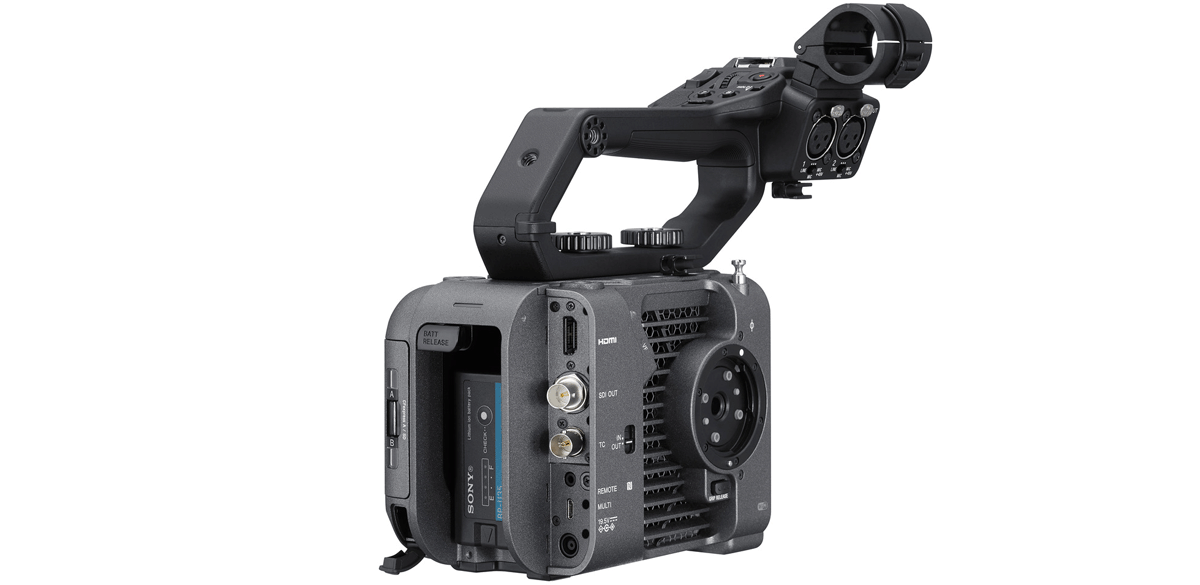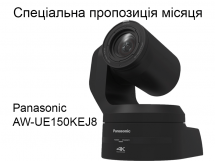| Українська | English | |||||||||||
|
|||||||||||
| News | About company | Service-centre | OB Van/SNG Rental | NextGen Energy Solutions | Contact us |
|
Engineering Service, Inc.
» News News After announcing the Sony FX6 in September already, Sony just released the full details, specs and pricing of its new small Cinema Line camera. Be sure to check out our hands-on review too. The FX6 is a dual native ISO camera which is likely using the a7S III sensor, it can shoot up to 120 fps in 4K and 240 fps in HD (both full sensor readout), built-in electronic variable ND, S-Cinetone & S-log 3 and much more. Read on to learn more!
There has been a lot of anticipation for that camera and now it is finally here: The Sony FX6 is a little powerhouse camera that seems to be a perfect combination of their professional-line FX9 and the much-praised still fairly new Sony a7S III.
Sony FX6 Specs – Exmor R 10.2 megapixel 4K sensor Let’s go through the facts first: the Sony FX6 features a 10.2 megapixel full-frame back-illuminated CMOS Exmor R sensor, which means it’s a native 4K full-frame sensor, unlike its bigger sibling, the FX9, which features a 6K sensor that gets downsampled to 4K for recording. Sony could not confirm whether they are using the a7S III sensor in the FX6, however it does look like that from what we can tell (and if you do the math, it also matches – if you take the 12.1 megapixel 3:2 sensor from the a7S III and shave off top and bottom to match the FX6 aspect ratio, you end up roughly with a 10.2 megapixel sensor). It’s important to note that there is no 4K crop mode for Super35mm on the FX6. This is also identical with the a7S III. In my opinion, it’s the camera’s biggest downside because that means you can’t really use it effectively with a lot of legacy glass, especially professional PL-mount lenses which are usually covering a S35 image circle. There is an HD crop for S35 though. BIONZ XR processor The new BIONZ XR processor which is already used in the a7s III is also used in the FX6. That gives it the processing power needed for various demanding tasks, for example great low light performance and high speed recording – more on that below. Sony says in their spec sheet that “future-oriented architecture boosts processing power by up to 4x”. It is unclear what this comparison is relating to, could be compared to the a7S III or to the FX9. Dual native ISO 800 and ISO 12,800 The Sony FX6 is a dual native ISO camera. While not publicly confirmed by Sony, the a7S III clearly also has a dual ISO system at similar native ISOs, because it shows the clearest picture in these two modes (see our review of the a7S III here). The low native ISO on the FX6 isn’t 640 like on the a7S III however, it’s 800, but the high native ISO is ISO 12,800 for both. As I can confirm in my first-look hands-on review, the FX6 seems to be as low-light capable as the a7S III, if not more due to better processing (less noise). We will still test this closely with a production unit of the FX6. Dynamic Range Sony claims a dynamic range of 15+ stops in the FX6. This will be tested by us as usual in our lab tests, and usually the manufacturers’ claims do not match our scientific comparison tests. Assuming that we are dealing with the same or similar sensor as in the a7S III here, we have high hopes for this camera, because the a7S III fared really well in our lab test (mind you, we have re-tested to the 12,800 native ISO which changed from 16,000 in the production version of that camera, and will update the a7S III lab test accordingly soon). S-Cinetone look & Slog 3 Like the FX9, the camera has S-Cinetone built-in, Sony’s “Venice look” picture profile that gives pleasing skin tones and does away with the “coldness” of the Sony look that many people took issue with in the past. Of course the camera also has Slog 3 built-in too. Fast Hybrid AF – even in S&Q modes Like the a7S III and FX9, the Sony FX6 features exceptional autofocus capabilities with facial and eye recognition and tracking. Unlike the a7s III, the touch tracking on the screen doesn’t work for objects, however you can track faces very well. The 720p screen used in the FX6 is the same as on the FX9, which is a touch screen, but not as responsive or versatile as on the a7S III.
What’s exceptional on the FX6 compared to the FX9 is that you can also use the autofocus in the S&Q modes: You can track faces at up to 100 fps in 4K with a 25p timebase and even up to 120 fps in 4K with a 29.97 time base. It’s a bit confusing as to when it’s available at which frame rates and when it isn’t, but please check out my review to find out more about this. High frame rates – slow motion at up to 120 fps in 4K and 240 fps in HD The FX6’s high frame rate modes match the ones from the a7S III: It can shoot up to 120 fps in 4K and up to 240 fps in HD, both in a full sensor readout. That’s amazing comparing to its bigger sibling, the FX9, which can’t do more than 30p with a full sensor readout. You have to crop down to a 5K crop mode which covers about 83% of the sensor to be able to record 50 or 60p. It tops out at 180 fps in HD in S&Q mode. More on that too in my review. Electronic variable ND Sony’s exceptional electronic variable ND is there again, which is still one of the greatest distinctions between Sony cameras and others. Stepless setting of ND between 1/4 and 1/128 ND intensity is simply amazing and so very useful.
Codecs – XAVC-I and XAVC-L, just like the FX9 Amazingly, the Sony FX6 shares the codecs with the FX9, not with the a7S III: Both the XAVC-I (intra-frame) and XAVC-L (Long GOP) in the MXF wrapper are there, all of them H.264-based. There’s no H.265-based codec like the XAVC HS 4K UHD 120p from the a7S III. This means good compatibility for all recorded codecs in the FX6 with existing editing platforms, because those are already known from the FS7 and FX9. Here is the full overview of codecs from Sony.
Recording media Here’s more similarity to the a7S III, rather than the FX9: The FX6 uses SDXC V90 (UHS-II/UHS-I) or CFexpress Type A (Sony Tough) cards as recording media. That means, no XQD cards like in the FS7 or FX9, but rather the fastest new cards on the market. The CFexpress Type A cards are expensive but give you all of the recording options from the FX6, and more manufacturers are soon entering this market which should get prices down.
Body and handling, powering The body itself is really small and features a detachable top handle, a monitor that can be mounted on various points on the top handle, as well as a handgrip that can be adjusted very easily. This entire design looks very much like the Sony FS5 and FS5 II, however with one big difference: there isn’t an EVF at the back of the camera. The camera uses Sony’s trusted BP-U battery standard that we’ve had since Sony EX1/EX3 days. Also the FS7, FS5 and FX9 uses the same standard. The camera has a new quick menu that gives you an overview of the most important functions in a ten page grid overview. While it’s a great idea, it needs a bit more work in my opinion because some functions that are supposed to work with each other simply don’t work with each other. I found myself using the normal menu all too often, which is enabled by a long press of the menu button – but more on that in my full hands-on review of the camera.
No EVF Granted, the EVF on the FX5 wasn’t great – not an OLED – yet it was nice that it was there. The FX6 doesn’t come with a loupe for the viewfinder like the FX9, so you will definitely need some kind of accessory to see your image outside in bright sunlight. My hope was that they would have included the brilliant OLED from the a7S III in the FX6 somehow, but that isn’t the case. It’s really time for Sony to sell a separate OLED viewfinder that can be used with any camera! They did it once with the RX100 viewfinder that was movable with a long cable, why not use that same technology and give it an HDMI connector to be camera-independent? If they only figure out powering, it would be an extremely successful product, as there is still a lack of camera-independent small EVFs on the market. Ports: SDI and HDMI outputs, RAW video output, TC In/Out The camera features both an SDI and HDMI port, and they both seem to be able to output 4K at the same time, which is amazing for such a small camera as well. There might be some limitations in some framerates as Yann from Sony mentions in the interview above, but we will check them out more closely once we get our hands again on a production version of the camera.
The FX6 can also output RAW video from its SDI port and according to Sony (see interview above), this is the same RAW we know from other Sony cameras. On the Sony FX9, this RAW output is only possible when purchasing the pricey XDCA-FX9 adapter, which I also talk about in my FX6 hands-on review. The Sony FX6 also features a BNC port to output and input timecode, which is of course great and much-needed for professional productions. There is also a USB-C port which, to our knowledge, is only used for firmware updates and cannot be used to record footage from (like for example in a Blackmagic Pocket Cinema Camera 4K or 6K). XLR ports and other audio The two XLR ports of the camera are situated in the removable top handle, as is the “proper” built-in microphone”. This of course creates a challenge when removing that handle and using only the barebones camera, for example when shooting in a small space or on a gimbal. The FS5 still had one XLR port built into the body itself and I found that choice very smart. As you can see in the interview above, Sony says this was controversial and seemingly more people wanted to have those XLR ports again back next to each other. In any case, it’s a shame we don’t even find a mini jack audio input in the body itself to be able to attach a small reference mic to the “camera brain” when operating minimalistically. Plus, there is a TC In/Out port, meaning you can use a Tentacle Sync timecode generator or similar product to sync up with your separate audio recording or second camera. Conclusion Sony seems to really have done its homework with the FX6 and it’s probably the most capable small camera they have ever produced. It remains to be seen how it will be taken by the market, but my guess is that it will become extremely popular. Having used a pre-production version of the camera for a few days for my initial hands-on review, I am excited about it – despite the fact that I have bought an FX9 and in many ways, this half-priced FX6 outspecs it. I am truly curious to see how other FX9 owners will react to the introduction of the FX6. « To the list of news |
|
|||||||||||||||||||||||||||||
 |
+38 (044) 593-18-20 +38 (073) 593-18-20 +38 (096) 532-96-82 +38 (095) 532-96-82 Service center Telegram @Engineer_Service |

|
|
|||||
 |
e-mail: engineer-service.tv 15 Vavylovykh str., Kiev, 04060, Ukraine Authorized service centre of Panasonic, Sony, JVC, Fujinon, Canon |
|||||||

